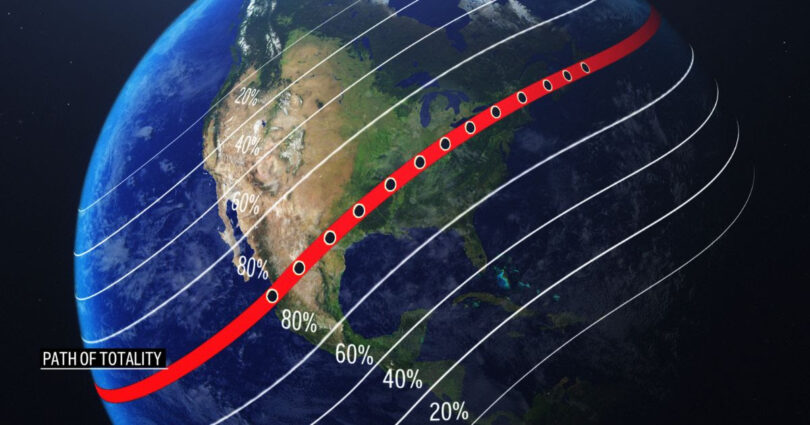Scientists Warn Eclipse Totality Path Has Shifted from What Was Previously Projected
Forget everything you think you know about the path of Monday’s solar eclipse.
Well, OK… maybe not everything. But the projected “path of totality” has shifted enough that some people who were expecting to see the full monty without leaving their homes may be disappointed.
“A new eclipse map — based on an updated figure for the radius of the sun — was published recently by John Irwin, a master in eclipse computations,” Forbes reported last weekend.
We’ve included the updated map below, because if you’ve been thinking how lucky you are to be right on the fringe of the area where the total eclipse will be viewable, well, that might not actually be the case.
The issue stems from the fact that no one is absolutely certain about the diameter of the sun, Forbes said.
This surprised me, by the way. Scientists confidently state where pandemics come from (or don’t) or by how many degrees the earth’s average temperature is going to rise over the next five decades, but they don’t know how big the sun is?
I mean, humans have been looking at the sun for … well, forever. Since there have been humans. No one has figured out how to measure it yet?
It’s only the source of all our planet’s energy, the largest object in the solar system. Or is it, even? Apparently there’s no way to know for sure.
Anyhoo, if you don’t know how big a light source is, it’s going to be challenging to predict the size of the shadow it might cast.
Other measurements are important, of course, and we know those with some confidence — the distance between the sun, moon and earth, for example, and the size of the moon that will be casting the shadow that we call an eclipse.
But the size of the sun? One scientist who has been working for over 10 years on solar eclipse calculations told Forbes that that number is basically up to the person doing the math.
“The solar radius is one of the parameters that enter into eclipse computations,” Luca Quaglia said in an email to the outlet. “But the choice of its value is really left to the eclipse computer.”
For well over a century, scientists have generally used the “standard value” of 959.63 arc seconds — “an arc second being one 3,600th of a degree,” Forbes explained.
“Measurements and observations in the last decade have demonstrated that this value is slightly too small,” Quaglia said. The actual diameter is now thought to be more like 960 arc seconds.
That’s enough of a difference to shift the path of totality by more than a third of a mile, Forbes said.
At any rate, the new, updated map appears below.
It should be noted, however, that this map is based on that 960 arc second estimate that no one is apparently certain is accurate.
Caveat emptor.


Leave a Comment